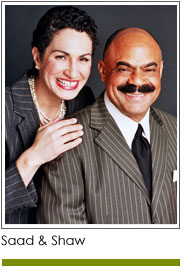 While this is certainly a time of crisis for many nonprofits, it is also a time to plan for continuity.
While this is certainly a time of crisis for many nonprofits, it is also a time to plan for continuity.
The pressures of 2020 may accelerate changes in leadership, and board members need to be prepared for the unexpected. You should expect that there will be staff changes, and that they won’t always be well-planned. Some may cause or accelerate a crisis. While you can’t foresee when you will be in a crisis, your nonprofit can plan for what to do. And there is a role for the board to play.
It is not unusual for a board member to step up and serve as an interim executive director or president/CEO when top leadership abruptly steps down. In cases we have observed the interim leader has been a person with subject matter experience and management experience. The board then works to find a permanent leader. But not every organization has someone from the board who can “step up.”
Here are four examples of proactive steps your nonprofit can take to prepare for an unexpected leadership change.
1. Schedule time to talk as a board with the purpose of identifying staff positions the organization depends on. This can include your executive director, chief financial person, program leadership, human resources, and/or fundraising leaders. This could also be a critical administrative person who has access to information, files, relationships, phone numbers, and more.
2. For each staff position identified, determine their critical roles, and assess whether there is someone else on staff who could step in, should the person abruptly leave the organization.
3. Ask the executive team to ensure cross training and sharing of passwords, files, and information so there is a back-up for each identified position in case of emergency. This is important for multiple reasons: there will be times of extended illness, vacations, family leave, and other events which will require a temporary assumption of another person’s responsibilities.
4. Review the ways in which staff share information with board. Look at the reports you receive and reflect on conversations with staff. Do you know what the primary programs are? What the “dashboard” items are that leaders keep their eyes on? What are the relationships between board members and staff? For example, does the board chair have an open and honest relationship with the executive leader? Would the chair know what is most critical if he or she had to step in and determine how operations would continue? Likewise, does the chair of the development/fundraising committee of the board have a relationship with your fundraising staff? Does the chair of the finance committee understand the organization’s books and know the issues your financial staff are managing? Critically, who understands your programs, service delivery, or – in the case of a school or university – how you are delivering education, and all your back-up plans?
Identifying who can step in to assist during an unplanned departure you can help ensure continuity of operations. This is important now, more than ever.
Copyright 2020
Mel and Pearl Shaw of Saad&Shaw – Comprehensive Fund Development Services. Let us help you find your way through this unknown time. Video and phone conferencing services always available. Call us at (901) 522-8727. www.saadandshaw.com.











